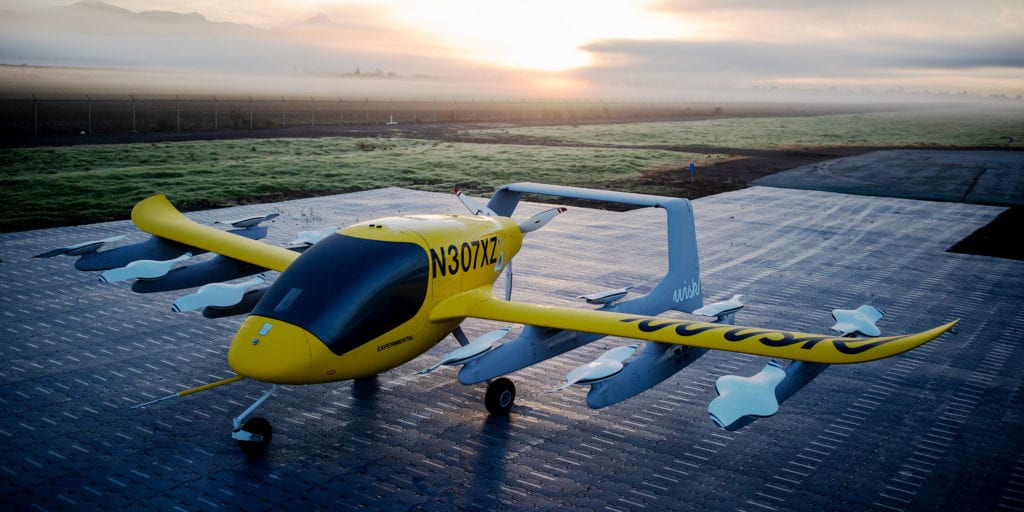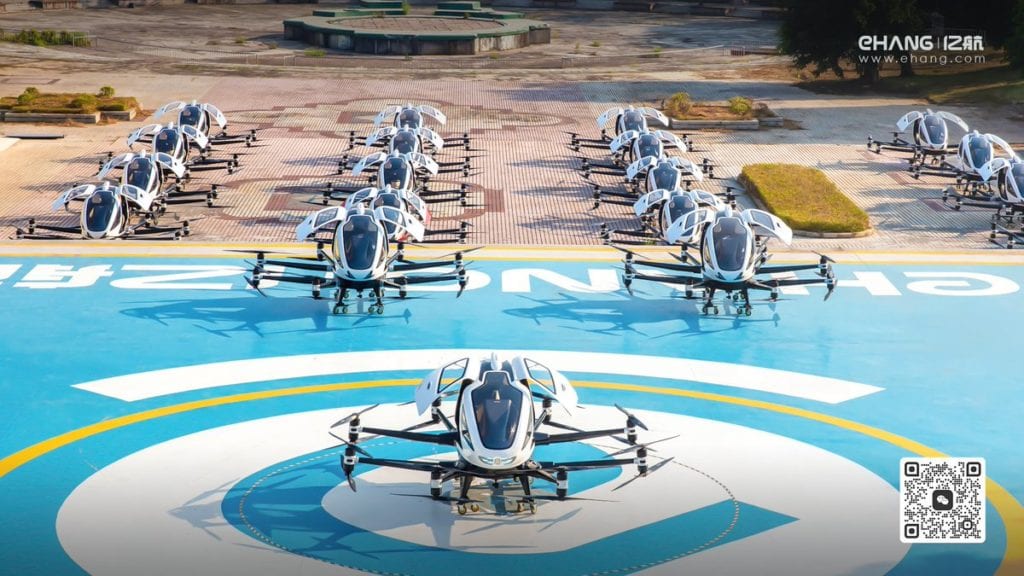Will Electric Air Taxis Fly Themselves?


Wisk, a joint venture of Kitty Hawk and Boeing, signed an MoU with the government of New Zealand to begin passenger transport trials using its autonomous ‘Cora’ air taxi, once it is certified. (Wisk)
As electric air taxi vehicle developers progress towards certification and deployment the industry is starting to ask itself who will pilot these aircraft. Many companies are choosing to design piloted aircraft while others like Wisk and EHang are developing autonomous aircraft.
During a July 1 panel discussion during Revolution.Aero’s Global 2021 Virtual Event, industry experts discussed the path to autonomous flight and the obstacles it must still surpass to become a reality.
While some people in the industry have seen this decision as a more radical path, these companies have rationalized their decision by looking at the current levels of autonomy already being utilized by commercial and military aircraft.
“From a technology perspective, autonomy is actually quite far along,” Gary Gysin, CEO of Wisk, said. “So, if you look at commercial aviation, over 90 percent of all flight hours are automated from takeoff to landing to autopilot, etc. There’s the comfort, obviously, of having a pilot sitting in front but the actual workload has decreased over the years. And then if you think about from a defense industry perspective, millions of flights have been flown with very large drones, you know, BVLOS [beyond visual line of sight] drones, that are obviously on missions and things like that, but that the technology exists to make this happen.”
EHang is already operating it electric autonomous aerial vehicle (AAV) aircraft in China on about 100 routes under a special permit, Andreas Perotti, chief marketing officer for Europe at EHang, said.
“We have around 100 routes or 100 vehicles in operation in predefined segregated areas based on the special permit…we’re a couple of months away from receiving the type certification for our product and our plan is to roll out 100 new routes of operation in the next one and a half years,” Perotti said.
Xwing is also exploring autonomy but on retrofitted cargo aircraft, Marc Piette, founder and CEO of Xwing, said. Piette said he sees this as a more “practical approach” and a quicker way to achieve certification. While Xwing’s aircraft is flying without a pilot, there is still a human operator on the ground.

Guangzhou-based EHang is using AI for intelligent navigation. (EHang)
“We do still have a human on the ground, mainly because you can automate the aircraft all you want but that aircraft still needs to take direction from the air traffic controller,” Piette said. “So, if an air traffic controller asks you to change heading, change airspeed, climb and descend, currently it’s done over voice over VHF channels, and we don’t look to automate that piece. So, we have humans on the ground that take those calls to translate those into high-level commands that then get sent to the aircraft for the aircraft to execute the aircraft on its own. There’s no remote control of the aircraft. The aircraft will take those high-level commands and automatically execute.”
However, Luuk van Dijk, founder and CEO of Daedalean AI, said that many operations in use today, such as those described by Gysin and Piette, shouldn’t really be defined as autonomous and instead as automated.
“I think it’s unfair to call it autonomy unless the aircraft takes off, taxis, flies, and lands without human intervention,” Dijk said.
Dijk said that as long as there is a human in the loop, operations are being automated not made autonomous which would require the technology to take control of the decision-making process.
One of the big obstacles to this becoming a reality is the common perception the artificial intelligence (AI) used to do this is a blackbox that cannot be certified.
“When I hear things like blackbox AI, that’s this troupe, this misconception that there’s this technology that nobody understands, which incidentally is also why it’s not certifiable, and this scary thing that what if it decides to kill us all. That’s a very Hollywood primitive type of thinking about what it is,” Dijk said.
The first step to overcoming this obstacle is to stop calling it AI, Dijk said.
“We can start by not calling it AI,” Dijk said. “We can start by calling it machine learning…and taking away some of these preconceptions and then you know it’s a lot less scary. It’s just a system that does what the human used to do only better.”
Perception is not the only obstacle autonomous flight faces. Dijk said the industry needs to address the safety of these systems next and then how to regulate and certify them.
Aircraft manufacturers are currently relying on redundancy as a safety mechanism.
“We only have 12 moving parts on the aircraft, and they’re designed such that we can have redundancy if one does fail so you’re not single threading on a single propulsion system, you’ve got redundancy actually built into the system, so I think that part is key,” Gysin said of Wisk’s aircraft.
Perotti said the same of EHang’s AAV. He said part of that redundancy still relies on a human operator being in the loop.
“Our vehicle design is basically from the hardware and from the software side, of course, designed with a lot of redundancy and backup measurements but the last layer of redundancy is, and will also stay, the human being in the kind of command-and-control center which is overviewing this traffic ecosystem.”
For urban air mobility to operate with hundreds to thousands of vehicles operating in one airspace, autonomy will be necessary, Dijk said.
“People are generally excited about urban mobility, you know, to get the urban mobility, to this higher density, you need the autonomy,” Dijk said. “So, autonomy is definitely a means to an end.”
Dijk said that the need for safety within these high-density airspace operations will be the real driver for the adoption of autonomy.
Anne-Claire Le Bihan, an aerospace engineer with expertise in autonomous flying at Acubed, the Silicon Valley-based division of Airbus, said that the safety and scalability benefits will work together as autonomy is adopted.
“Safety and scalability are definitely great points that autonomy can leverage and improve,” Bihan said. “If we look at the current number of pilots that are available now, not that many pilots, so in order to really scale the operations, we need to increase the autonomy in order to enable more vehicles in the air.”
The scalability of these operations will also be key to their success to make them more affordable. Perotti said the affordability of air taxi operations will be a big part of the success of the industry.
“At the end of the day, if we do not manage to achieve a business case and especially a reasonable price for the end consumer, there is no need for our industry and we’re not going to succeed because we shouldn’t forget that what we’re doing here is not innovative in the way how we bring people or cargo or goods from A to B,” Perotti said.
The post Will Electric Air Taxis Fly Themselves? appeared first on Aviation Today.
Check FastApn access for commercial satcoms at Fastapn
Flytlink – Avionics, Satcom’s and IFE Consultants






